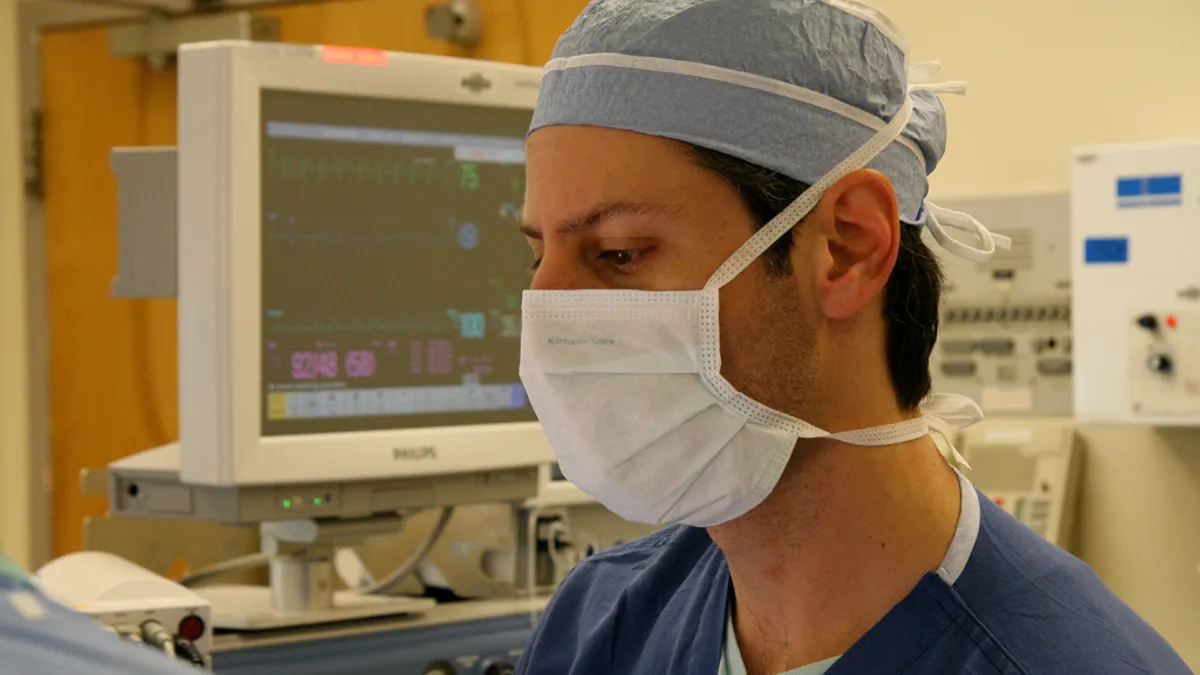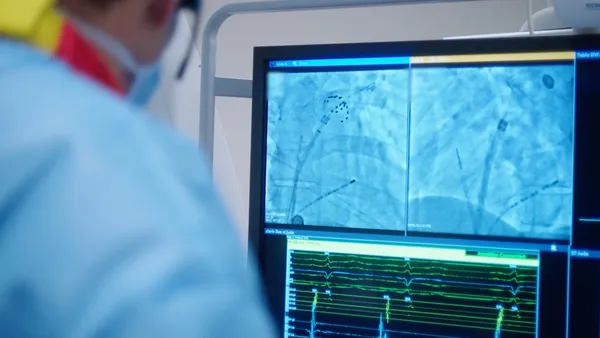Dive Brief:
- Medtronic said its CoreValve transcatheter aortic valve replacement (TAVR) device showed a low rate of severe deterioration five years after implantation, compared with surgical aortic valve replacement (SAVR), in study results for high-risk patients.
- Severe hemodynamic structural valve deterioration was 0.8% for CoreValve vs. 1.8% for surgery in five-year data from Medtronic’s U.S. pivotal high-risk trial. Rates of mortality and major stroke were similar for patients in both groups. The results were presented over the weekend at the Transcatheter Cardiovascular Therapeutics conference in San Diego.
- Another study comparing CoreValve and CoreValve Evolut to surgical aortic valve replacement in patients at intermediate risk for open-heart surgery showed similar rates of death and stroke at two years in both the TAVR and SAVR groups, Medtronic said.
Dive Insight:
Medtronic launched CoreValve in 2014, the Evolut system in 2015 and the third-generation Evolut Pro for extreme-, high- and intermediate-risk patients in 2017. Favorable longer-term comparisons between CoreValve and traditional open-heart surgery for aortic valve replacement can only bolster Medtronic’s standing in the U.S. TAVR market.
"These were early CoreValve patients, some of the first patients to receive the therapy, and it's reassuring to see that the CoreValve System has proven to be durable out to five years," Thomas Gleason, chief of the Division of Cardiac Surgery at the University of Pittsburgh School of Medicine, said in a statement.
"Earlier concerns regarding the durability of TAVR are certainly tempered by these mid-term data," he said.
For the 750 patients followed for five years, the primary endpoint of all-cause mortality was 55.3% in the CoreValve group and 55.4% in the surgery group. Rates of major stroke were 12.3% in CoreValve patients and 13.2% in surgical patients.
Medtronic competes with Edwards Lifesciences, which was first to market with its Sapien TAVR device in 2011. The success of the first generation of TAVR devices in patients at high risk of dying during open-heart surgery earned the companies expanded indications for intermediate-risk patients. Both device makers are now studying the valves in low-risk patients.
In the separate study of intermediate-risk patients, called Surtavi, Medtronic’s TAVR device had a primary endpoint of all-cause mortality or disabling stroke of 12.7% at two years, compared with 12.6% for SAVR.
Medtronic said patients treated with TAVR had lower rates of stroke and new onset atrial fibrillation, less acute kidney injury and fewer transfusions. SAVR patients had fewer permanent pacemaker implants and less aortic regurgitation.
TAVR devices such as CoreValve are delivered to the heart via a catheter threaded through the patient’s arteries.










